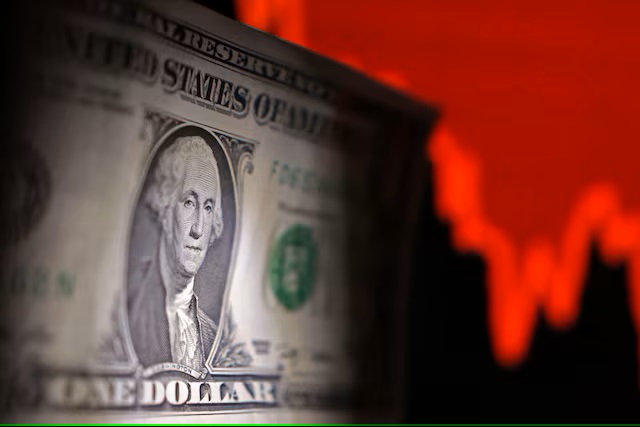The Dollar Struggles Amid Taiwan Dollar Surge
The dollar struggled to make headway on Tuesday as an unprecedented two-day surge in its Taiwanese counterpart spilled over to other regional peers, highlighting the fragility of the U.S. currency.
Hong Kong’s de-facto central bank announced earlier that it bought $7.8 billion (HK$60.5 billion) to prevent the local currency from strengthening and breaking its peg to the U.S. dollar.
Investors are also awaiting actual progress in trade negotiations with the United States and evidence of a thaw in Sino-U.S. relations, rather than just hints from officials.
Taiwan Dollar Surge
The Taiwan dollar surged to a three-year high of 29.59 per dollar on Monday, having leapt 8% in two days, coinciding with the end of U.S.-Taiwan trade talks in Washington. It was last steady at 30.02 per dollar.
“While the move has been driven by hedging activity from lifers, the factor many talk about is whether these countries with historically weak and heavily managed currencies are now appealing to Trump through the currency channels,” said Chris Weston, head of research at Pepperstone.
Such a deal has been repeatedly denied by Taiwan’s central bank, but the market remains unconvinced, interpreting the Taiwan dollar’s jump as having tacit approval, likely welcomed by the United States.
Regional Currency Movements
Currencies like the Australian dollar and the yen benefited from the fallout, with the Aussie hovering near Monday’s five-month high at $0.6449.
The yen was slightly weaker at 143.99 per dollar, following a 0.9% surge overnight. China’s onshore yuan strengthened to its highest level since March 20 at 7.23 per dollar, following the reopening of trade after an extended break.
These moves further reinforced the narrative of investors falling out of favor with the U.S. dollar, spurred by President Donald Trump’s chaotic global tariff policy.
“U.S. Treasury yields are basically back to where they were prior to ‘Liberation Day’, but the U.S. dollar is still sharply weaker,” said Carol Kong, a currency strategist at Commonwealth Bank of Australia. “Markets are still unsure of the U.S. dollar’s safe-haven status… investors are wary of putting their money into the U.S. dollar.”
Dollar Index and Central Bank Decisions
Against a basket of currencies, the dollar was up 0.2% at 100.04. The dollar index recorded a monthly decline of 4.3% last month, marking the largest drop in over two years.
The Federal Reserve announces its policy decision on Wednesday, with expectations to keep rates on hold, but this meeting may be pivotal as the outcome becomes less certain.
Additionally, the euro fell 0.25% to $1.1287, while sterling eased 0.24% to $1.3265. The New Zealand dollar was down 0.3% at $0.5949.
The Bank of England also meets this week, expected to lower interest rates by a quarter point on Thursday, as Trump’s tariffs cast a shadow on the global growth outlook. Meanwhile, central banks in Norway and Sweden are expected to keep rates steady.

















